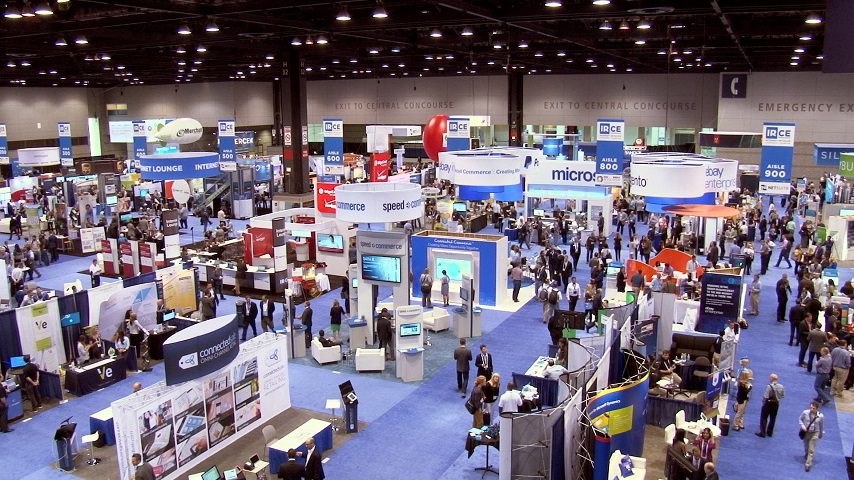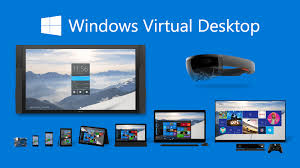Organizing a successful conference requires more than just securing the perfect venue or curating a list of engaging speakers. One of the most crucial factors is a robust conference marketing strategy that helps attract the right audience and keeps them engaged before, during, and after the event. In a crowded market where attendees have plenty of conferences to choose from, event organizers need to deploy creative and impactful marketing strategies to stand out.
In this blog, we’ll dive into three essential conference marketing strategies that can help you drive registrations, increase engagement, and ensure your conference leaves a lasting impact.
1. Create a Comprehensive Content Marketing Plan
Content marketing is one of the most effective ways to engage potential attendees, build interest around your conference, and establish credibility in your industry. By sharing valuable content related to your conference theme, topics, or speakers, you can create a buzz and attract the right audience. Here’s how to build a comprehensive content marketing strategy for your conference:
Pre-Conference Content
The first step is to create a series of pre-conference content that will help generate awareness and build excitement. This content should be informative, engaging, and tailored to your target audience’s interests.
Key pre-conference content ideas:
- Blog Posts: Publish articles that delve into the topics your conference will cover, highlighting key trends, challenges, or innovations in your industry. You can also write posts that feature interviews with speakers or spotlight sessions to provide potential attendees with a sneak peek into what they can expect.
- Speaker Interviews and Profiles: Feature in-depth interviews with keynote speakers, panelists, or thought leaders who will be presenting at your conference. These interviews could be in the form of blog posts, videos, or podcasts. This not only introduces your audience to the experts they’ll hear from but also positions your conference as a thought leadership hub.
- Teaser Videos: Create short promotional videos that showcase the highlights of your upcoming conference, including clips of previous events (if applicable), insights into your speakers, and a glimpse of the venue. Video is a powerful medium for building excitement, and it’s easily shareable on social media, through email campaigns, or embedded on your conference landing page.
- Social Media Content: Consistently post content on social media platforms in the months leading up to the conference. Share speaker announcements, agenda updates, and behind-the-scenes preparations. Engage with your audience by asking questions, encouraging them to share what they’re looking forward to, or by creating countdowns to build anticipation.
Conference Website and Landing Page
Your conference website or dedicated landing page is one of the most critical pieces of your content marketing plan. This is where potential attendees will go to learn more about your event, register, and engage with other content. Therefore, it’s essential that your website is well-designed, user-friendly, and optimized for conversions.
Key features of an effective conference website:
- Clear Call-to-Action (CTA): The main CTA should be prominently displayed on the homepage. It could be “Register Now,” “Buy Tickets,” or “Save Your Spot.” Make it easy for users to register by reducing friction in the sign-up process.
- Mobile Optimization: Ensure your website is fully optimized for mobile devices. Many people will visit your site via smartphones, and if the registration process is clunky on mobile, it could deter potential attendees from signing up.
- Speaker Bios and Agenda: Clearly list the conference agenda and detailed speaker bios. Attendees are more likely to register if they can see a well-thought-out program and understand the value they’ll gain from attending.
- Testimonials and Social Proof: If you’ve organized conferences before, include testimonials or quotes from past attendees or speakers. Social proof can significantly increase trust and help convince potential attendees that your event is worth their time.
Content Marketing During the Conference
Content creation shouldn’t stop once the conference begins. In fact, providing real-time updates and insights during the event can boost engagement and ensure attendees are excited about the sessions and activities.
Key during-conference content ideas:
- Live Blogging or Social Media Coverage: Provide real-time coverage of the conference sessions on social media platforms. Live-tweeting key insights, posting session highlights on Instagram Stories, or live streaming on LinkedIn or Facebook can help extend your conference’s reach and keep both attendees and non-attendees engaged.
- Video Highlights: Capture short clips of speaker presentations, networking sessions, or interviews with attendees to share throughout the day. These video highlights can be shared on social media, embedded in daily recap emails, or stored for post-conference content.
- Real-Time Engagement on Event Apps: If you’re using an event app, ensure that you’re consistently updating the feed with relevant content, including speaker announcements, reminders of upcoming sessions, or polls and surveys to gather attendee feedback in real-time.
2. Utilize Multi-Channel Marketing to Maximize Reach
To maximize your conference’s reach and visibility, it’s essential to leverage a multi-channel marketing approach. This strategy ensures that you’re engaging with potential attendees on the platforms where they spend the most time. A multi-channel approach integrates several marketing channels to create a cohesive and powerful promotion plan.
Email Marketing
Email marketing remains one of the most effective tools in the event marketer’s toolkit. A well-executed email campaign can significantly increase registrations and keep your audience informed and engaged throughout the lead-up to the conference.
Key email marketing strategies:
- Segmented Campaigns: Segment your email list to send personalized messages to different groups of attendees. For example, first-time attendees may need more educational content about the conference, while returning attendees may appreciate updates on new features or exclusive offers.
- Automated Drip Campaigns: Set up a series of automated emails that nurture potential attendees from awareness to registration. Start with an introductory email introducing the conference and its key benefits, followed by reminders, registration deadline notices, and event updates.
- Conference Updates and Reminders: As the event date approaches, send regular updates and reminders about the conference agenda, speaker additions, or special promotions. Keep the communication consistent but not overwhelming.
Social Media Marketing
Social media is a powerful platform for creating buzz around your conference. It allows you to connect directly with your audience, share real-time updates, and encourage engagement.
Key social media strategies:
- Paid Social Ads: Utilize targeted paid ads on platforms like Facebook, LinkedIn, and Instagram to reach a broader audience. With the ability to target based on job titles, interests, and behavior, paid social ads allow you to reach potential attendees who may not yet be aware of your conference.
- Hashtag Campaigns: Create a unique, branded hashtag for your conference and encourage attendees, speakers, and sponsors to use it across their posts. This helps generate organic content and creates a sense of community around your event.
- Influencer Partnerships: Collaborate with industry influencers, thought leaders, or previous speakers to help promote your event. They can share event details, endorse the conference, or even create content that highlights their involvement.
Paid Search and Display Advertising
Paid advertising on platforms like Google Ads can help you reach potential attendees who are actively searching for events or educational opportunities within your industry.
Key paid search strategies:
- Keyword Targeting: Target keywords related to your conference, such as “industry conference 2024” or “tech summit registration.” Ensure your ads appear when potential attendees are searching for events similar to yours.
- Retargeting Ads: Use retargeting ads to reach users who have visited your event website but haven’t yet registered. These ads serve as reminders and can increase the likelihood of conversions.
Affiliate and Partner Marketing
Leverage your sponsors, partners, and affiliates to help promote your conference. These stakeholders have their own networks and audiences that they can tap into to increase awareness and drive registrations.
Key affiliate marketing strategies:
- Partner Promotions: Encourage your sponsors and partners to promote the conference through their email newsletters, social media channels, and websites. Provide them with promotional assets like banners, videos, or graphics to make it easy for them to share.
- Affiliate Incentives: Set up an affiliate marketing program where affiliates earn a commission for every attendee they refer. This incentivizes partners to actively promote the event to their networks.
3. Foster Engagement Through Personalization and Interactive Experiences
Personalization and interactive experiences are essential for keeping attendees engaged throughout the conference journey. From the initial marketing touchpoint to post-event follow-ups, creating a personalized experience for each attendee can significantly enhance their overall experience and ensure they remain engaged with your content.
Personalized Conference Invitations and Communication
From the very first email invite to the follow-up communications, personalizing your messaging can significantly increase engagement and registration rates.
Key personalization tactics:
- Dynamic Email Content: Use dynamic email content to tailor your invitations based on the recipient’s preferences or past attendance history. For example, if someone has attended your conference before, highlight the new features or speakers that will make this year’s event unique. If they’re a first-time attendee, focus on educating them about the event’s value.
- Tailored Recommendations: Use data from past conferences or attendee behavior to recommend sessions, workshops, or networking opportunities that align with their interests. Many event apps allow you to create personalized agendas for attendees based on their preferences.
Interactive Elements During the Conference
Attendee engagement should be a priority throughout the conference. Incorporating interactive elements into your event helps attendees feel more connected and involved.
Key interactive strategies:
- Live Polls and Q&A Sessions: Allow attendees to participate in live polls during sessions or ask questions through event apps. This not only makes sessions more interactive but also gives attendees the chance to engage directly with speakers.
- Gamification: Implement gamification features, such as leaderboards, scavenger hunts, or interactive quizzes, to encourage attendee participation. You can offer rewards or prizes for those who actively participate, further motivating engagement.
- Networking Platforms: Utilize event apps or online platforms that facilitate networking through matchmaking features, virtual lounges, or discussion boards. Offering scheduled networking sessions can also help attendees build meaningful connections.
Post-Event Engagement
Your engagement strategy shouldn’t end when the conference does. Keep the momentum going by maintaining communication with attendees and providing value even after the event.
Key post-conference engagement strategies:
- Post-Event Surveys: Send out post-event surveys to gather feedback from attendees. Not only does this help you improve future conferences, but it also shows attendees that their opinions matter.
- Content Recaps: Share session recordings, key takeaways, or blog posts that recap the highlights of the event. This can be sent out via email or shared on your website and social media channels.
- Exclusive Content Offers: Offer attendees exclusive access to additional content, such as whitepapers, e-books, or interviews with speakers. This keeps them engaged with your brand and positions your event as a valuable learning resource.
Conclusion
A successful conference marketing strategy requires a combination of engaging content, a multi-channel approach, and personalized, interactive experiences. By implementing these three conference marketing strategies—content marketing, multi-channel marketing, and personalized engagement—you can attract the right attendees, keep them engaged, and ensure your conference is a standout success. Whether you’re planning a large industry conference or a niche event, these strategies will help you maximize your reach, enhance attendee experience, and build long-lasting relationships with your audience.



